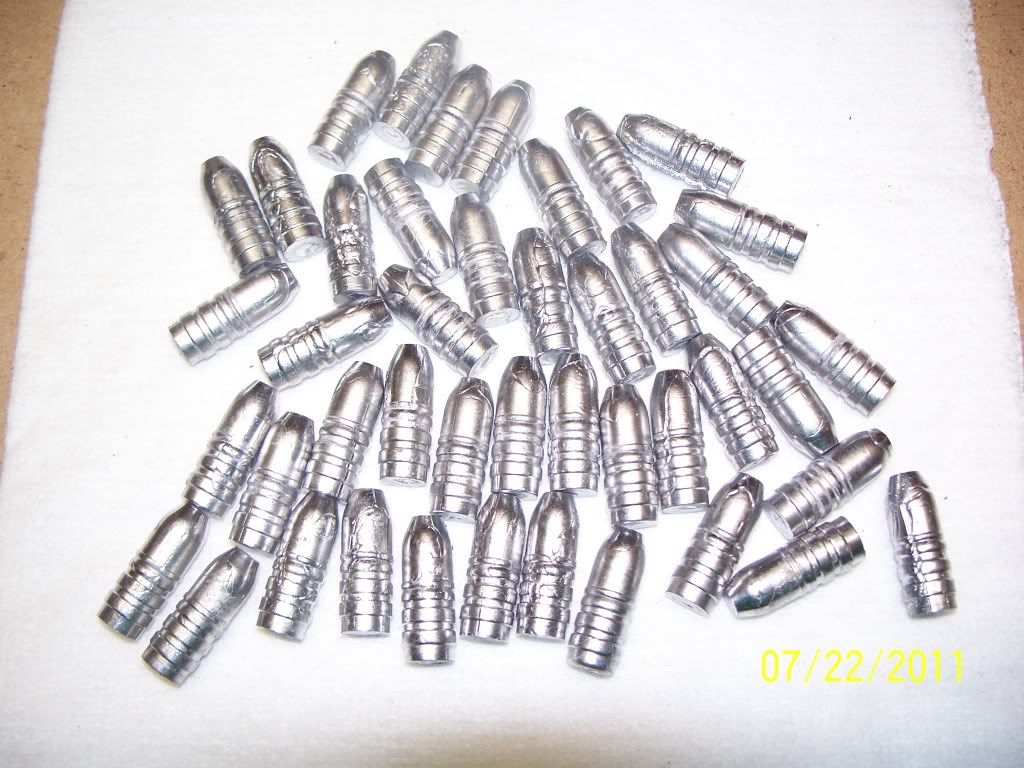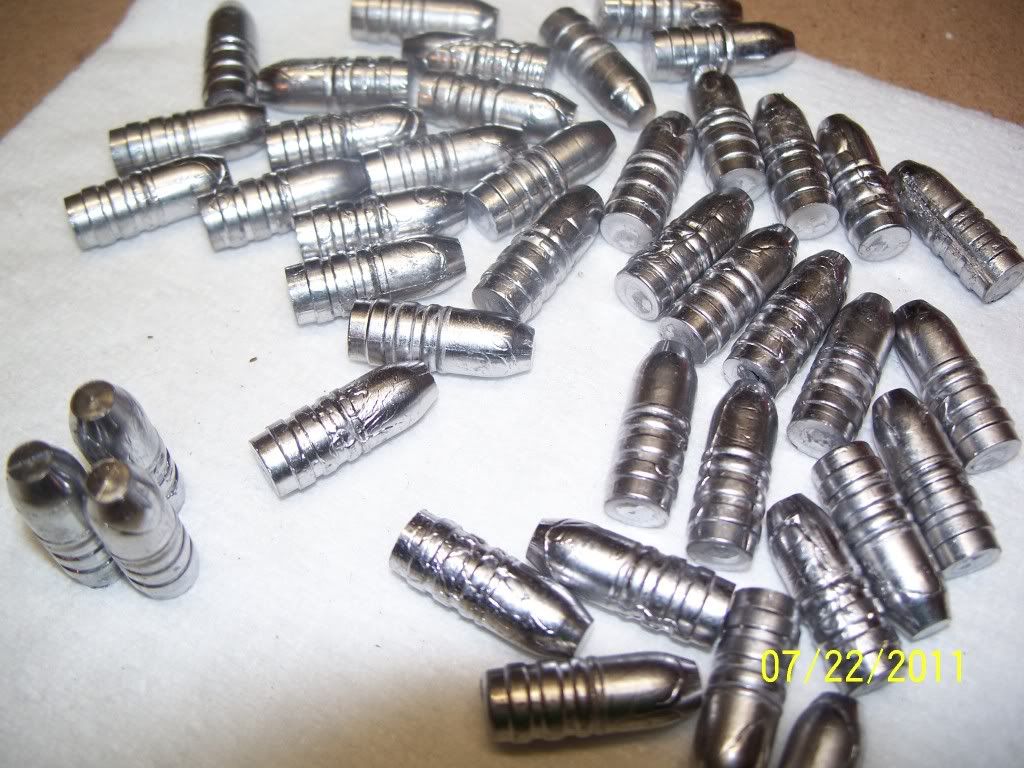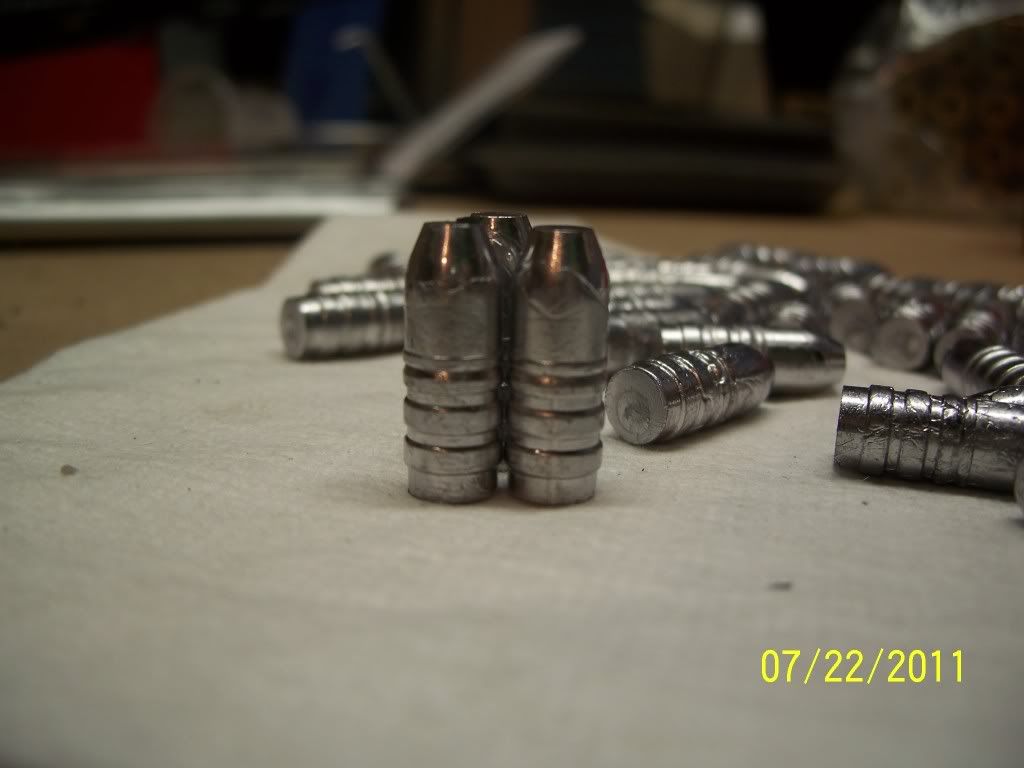bear with me guys it was literally my first cast.
Ingots were dropped and melted 10lb in the Lee Production pot with 8oz of 50/50 tin bar solder. It flowed well.
My bullets were wrinkled. Upon futher reseacrh the mold was not hot enough (Lee C309150F). It sat it in the pot on the edge with it partially submerged until no alloy stuck. I'll double the time next go around
they weighed 155 grains on average

|
   
   
|


|






 Reply With Quote
Reply With Quote





















